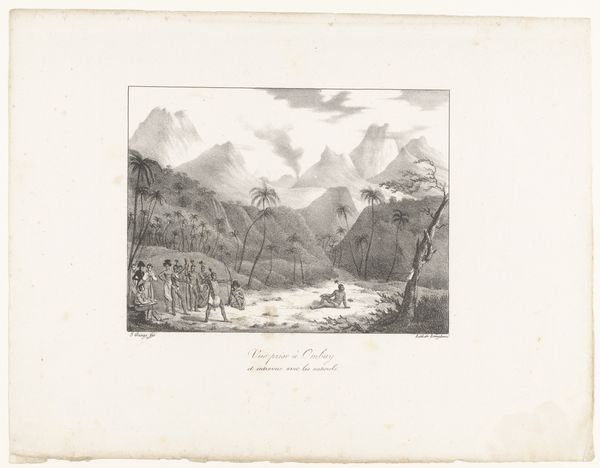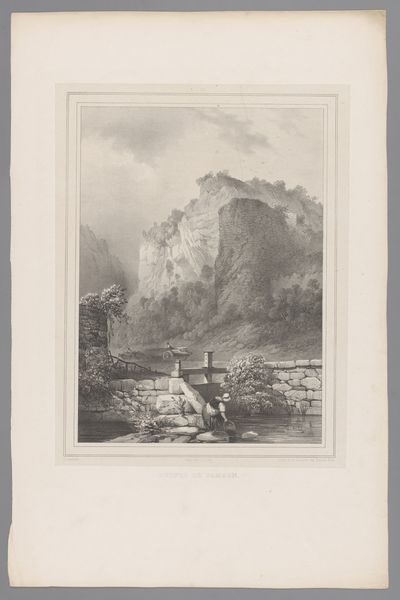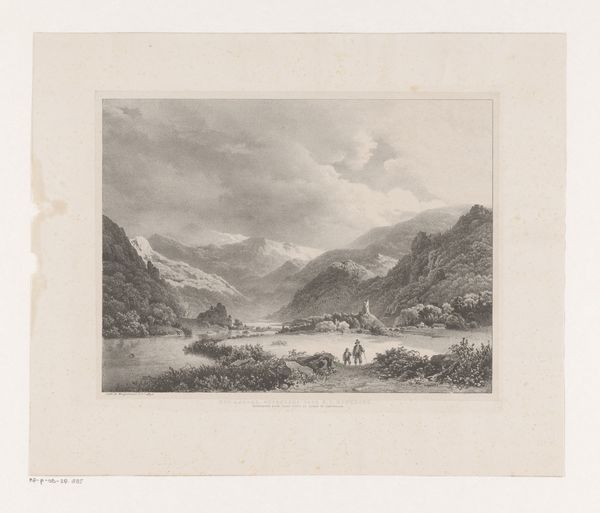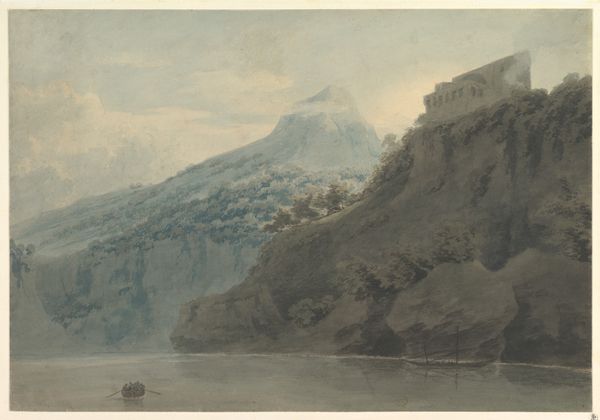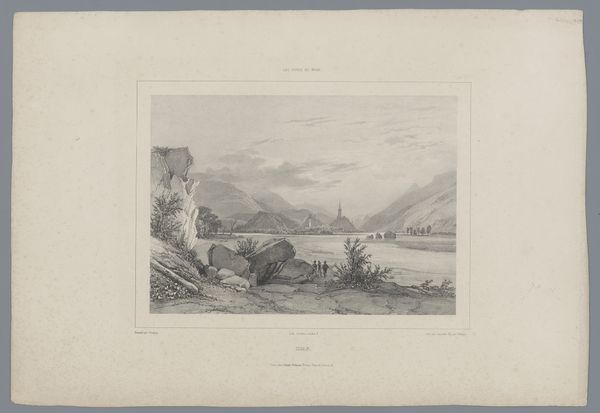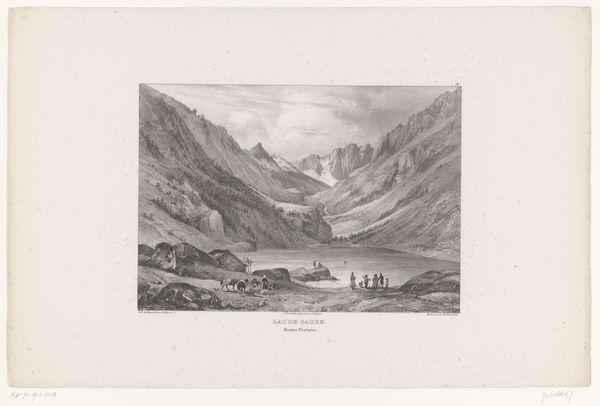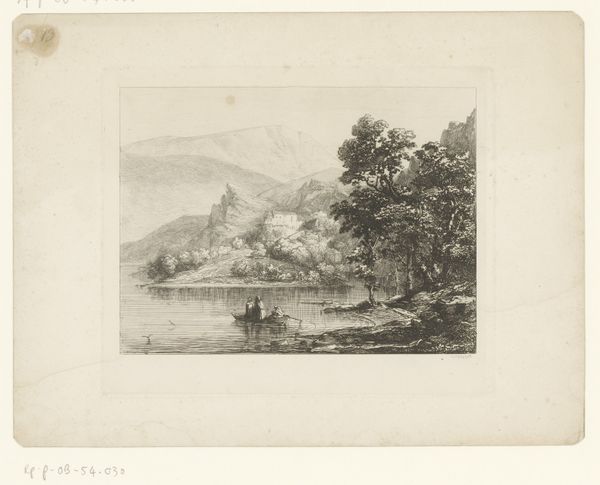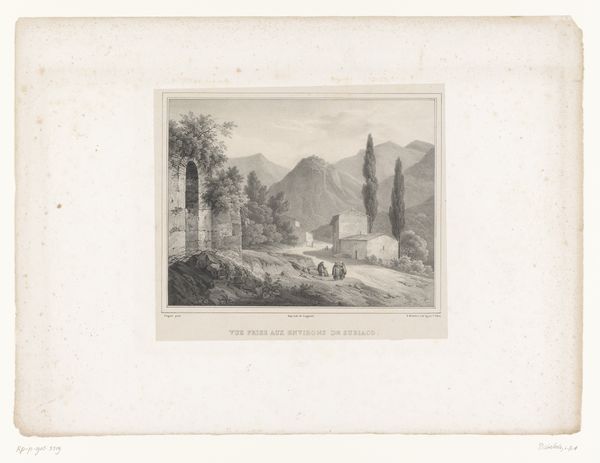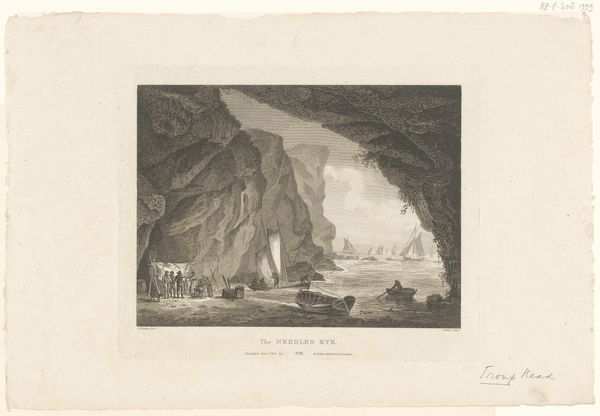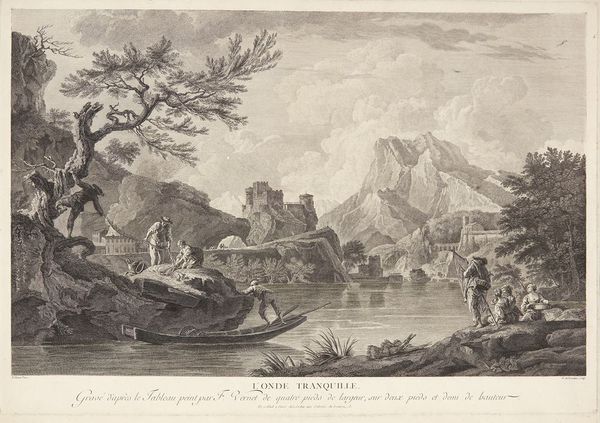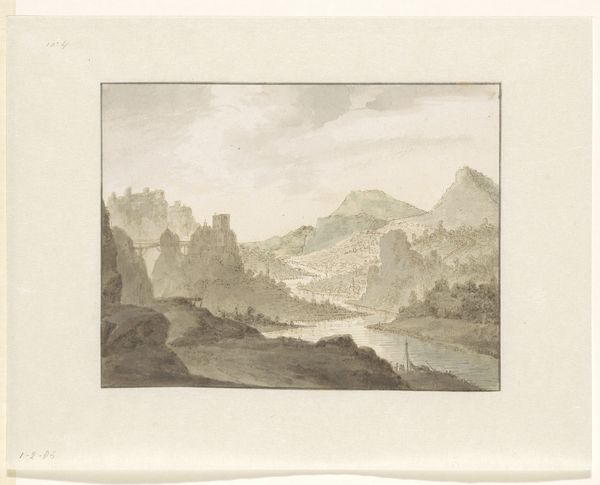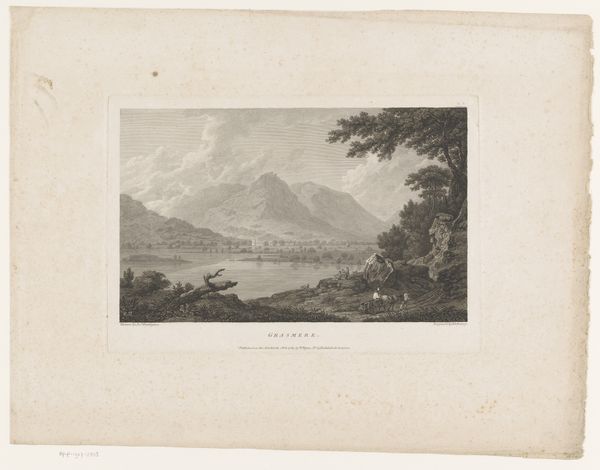
Dimensions: height 400 mm, width 565 mm
Copyright: Rijks Museum: Open Domain
Curator: What a stunning depiction! This is Eugène Cicéri's "Zicht op de Tellskapel aan het Vierwoudstrekenmeer," created in 1859. A drawing rendered in ink on paper, it offers a romantic perspective on a location of great historical significance. Editor: It feels quite serene, yet somehow monumental. The way the artist uses light and shadow really captures the dramatic scale of those mountains juxtaposed with the placid lake. And that little chapel perched right at the water’s edge is intriguing. Curator: Indeed. The Tellskapelle, or Tell's Chapel, commemorates William Tell, a legendary figure in Swiss history—a symbol of resistance against oppression. Placing the chapel within this vast landscape emphasizes the themes of national identity, memory, and the enduring power of landscape to evoke historical narratives. The choice to render it en plein air suggests a Romantic desire to capture the sublime beauty of the location, intertwining history with natural grandeur. Editor: The watercraft depicted surely contribute to this sense of place. The boats bring it to life, reminding us that this landscape is actively occupied and traveled—and each detail carries an intended visual weight. In this composition, notice how the angle of the boats leads the eye back toward the chapel. Curator: The imagery surrounding William Tell became particularly important in 19th-century Switzerland. As the nation grappled with defining its identity, this story provided a narrative of freedom, independence, and resistance. This image circulated within the market for landscape imagery but also a visual field filled with the history of nationalism. Editor: So, even what seems like a tranquil landscape drawing also communicates political ideas. The mountains looming, their image has stayed consistent even as political currents change. Thank you. Curator: My pleasure. To observe the impact of image on the human psyche is a valuable exercise, I think, when studying the historical role of an artwork like this.
Comments
No comments
Be the first to comment and join the conversation on the ultimate creative platform.
